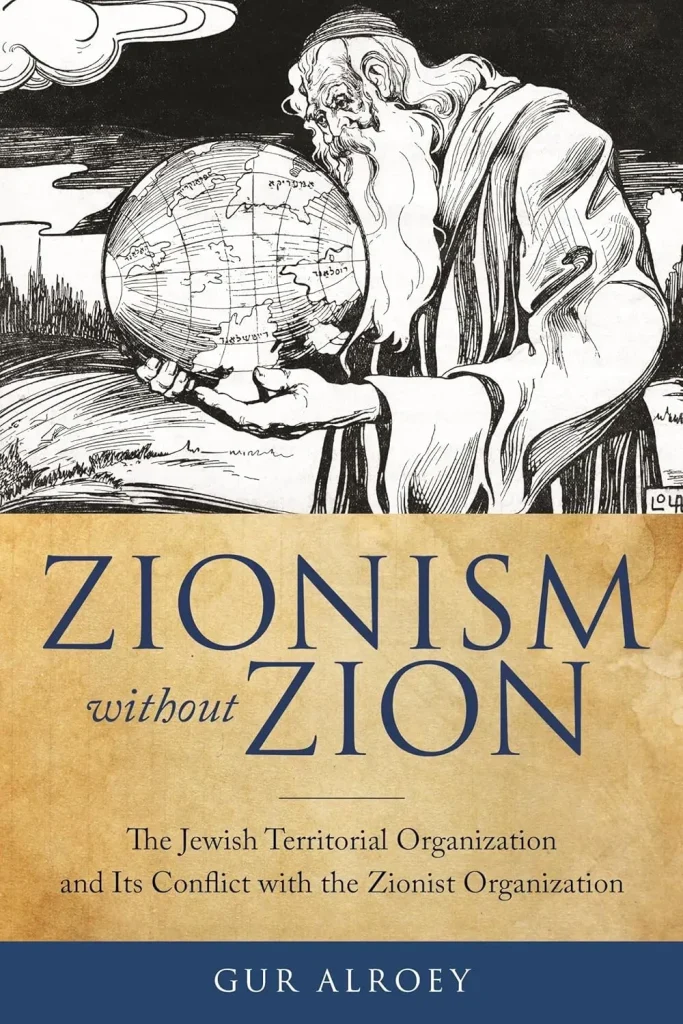The Jewish Territorial Organization emerged during a pivotal moment in Zionism history, as many Jewish exiles sought a viable homeland amidst rising persecution in Europe. While the Galveston Plan aimed to redirect Jewish immigrants from Ellis Island to Texas, the organization represented a breakthrough in the quest for a safe refuge outside the traditional aspirations for Palestine. This initiative, steeped in the hopes and dreams of countless individuals, highlighted the complexities of Jewish identity and national aspirations at the turn of the twentieth century. The organization’s efforts were influenced by figures like Theodor Herzl, whose vision of a Jewish state was often perceived in contrast to the bold experiments proposed by the I.T.O. The narrative surrounding this endeavor resonates today, reminding us of the persistent quest for belonging and safety, as noted in Kathryn Schulz’s review of
Understanding the Galveston Plan and Its Impact on Jewish Immigration
The Galveston Plan stands as a pivotal chapter in the history of Jewish migration to America. Designed in the early 20th century, this initiative aimed to redirect Jewish immigrants away from Ellis Island to Galveston, Texas, as a more viable entry point. This plan emerged during a time of increased persecution in Europe, prompting many to seek refuge in the New World. While initially met with mixed reactions, the Galveston Plan represented an ambitious attempt by the Jewish Territorial Organization to establish a foothold for Jewish communities in America, contributing significantly to the larger narrative of Zionism and Jewish identity in the new world.
The impact of the Galveston Plan was multifaceted. It not only facilitated the entry of about ten thousand Jewish immigrants into America but also fostered the development of Jewish communities across the southwestern part of the country. This initiative, however, contrasted sharply with the foundational vision of Zionism, which sought a homeland in Palestine. The plan highlighted the complexities of Jewish identity, as many immigrants, while still connected to their cultural roots, began to assimilate into American society. The task of integrating these newcomers was championed by influential figures such as Rabbi Henry Cohen, who worked tirelessly to support and welcome these displaced individuals into their new environment.
Zionism’s Evolution: From Herzl to Jewish Territorial Organization
Zionism has undergone significant transformations since its inception in the late 19th century with Theodor Herzl at its helm. Herzl’s vision was to create a Jewish state in Palestine as a solution to persecution faced by Jews in Europe. However, the catastrophic events that unfolded, including the pogroms in Russia and the response to such crises, led to alternative movements like the Jewish Territorial Organization (ITO). The ITO, distinct from mainstream Zionism, explored possibilities beyond the borders of Palestine, seeking other viable options for a Jewish homeland as exemplified by the Galveston Plan.
This evolution within the Zionist movement illustrates the deep divisions and varied responses among Jewish leaders and communities to the pressing need for a sustainable solution to centuries of anti-Semitism. Figures like Israel Zangwill emerged from this backdrop, advocating for territorial solutions that would ensure safety and refuge for Jewish people wherever possible. The creation of the ITO opened discussions on what it meant to be Jewish in a modern context, suggesting that attachment to a homeland may extend beyond the traditional confines of geographic territory. This ongoing debate remains relevant and contentious today as debates about national identity and homelands continue.
Exploring Ezekiel’s Vision: A Historical Perspective on Exile and Hope
Ezekiel’s vision in the valley of dry bones serves as a powerful metaphor for the Jewish experience of exile and the yearning for revival. His prophetic experience of witnessing bones come to life underscores a deeper spiritual narrative that parallels the struggles faced by the Jewish nation throughout history. Like Ezekiel, many exiles have grappled with feelings of dislocation while simultaneously holding onto hope for a restoration of identity and community. This vision resonates with modern struggles for a Jewish homeland, emphasizing a notion of resurrection—not just of individuals or communities, but of cultural and national identity.
The imagery of the dry bones transforming under divine breath encapsulates the historical context in which Jewish stories have unfolded, reflecting themes of redemption and resilience despite adversity. As modern-day Jewish scholars and writers, including Rachel Cockerell, revisit these narratives, they infuse historical accounts with rich emotional textures that speak to ongoing struggles for belonging and recognition. Such parallels remind us that the quest for a Jewish homeland, whether in America or Palestine, is not just a matter of political aspirations but is deeply rooted in the spiritual essence of a people seeking life in the midst of despair.
Resonance of the ‘Melting Pot’: Jewish Identity in America
Rachel Cockerell’s work ‘Melting Point’ vividly captures the complexities of Jewish identity in America, resonating with the metaphor of the ‘Melting Pot.’ This concept speaks to the assimilation of diverse cultural backgrounds into the American fabric, highlighting both the possibilities and challenges faced by Jewish immigrants. In the book, Cockerell explores her own family’s journey, navigating the intersections of heritage, identity, and the inherent tensions of being both Jewish and American. Through primary sources and personal narratives, she reveals the rich tapestry of immigrant experiences that characterize the American Jewish story.
The ‘Melting Pot’ metaphor evokes strong emotions, suggesting notions of unity and acceptance while also raising questions about the loss of cultural identity in the process. Cockerell’s narrative unfolds the realities of a multicultural America where individuals often must grapple with the balance between assimilation and cultural preservation. The stories of her ancestors reflect broader trends within the Jewish community, revealing how the quest for belonging in a new land shapes both personal identities and collective narratives. This exploration becomes particularly significant in today’s context, where discussions around multiculturalism and integration continue to evolve.
The Role of Historical Narratives in Shaping Jewish Identity
Historical narratives play a crucial role in shaping contemporary Jewish identity, as they serve to connect past struggles with present realities. Cockerell’s ‘Melting Point’ seeks to resurrect these narratives through a chorus of voices from various time periods, instead of adopting a singular authoritative perspective. By weaving together testimonies and experiences, the book invites readers to engage with the complexities of Jewish history, illuminating the moral ambiguities and profound experiences that have defined Jewish existence. This multifaceted approach enriches the understanding of how historical contexts influence current Jewish identity.
Engaging with these historical narratives allows for a broader reflection on the Jewish experience as one that is marked by both triumphs and tragedies. The interplay between personal stories and collective memory fosters a deep sense of belonging and establishes a connection to the historical consciousness that informs present identities. Within the framework of Zionism and the quest for a homeland, Cockerell’s work underscores the importance of acknowledging diverse perspectives and experiences within the larger narrative, reminding us that history remains a living dialogue that shapes ongoing debates around Jewish identity and belonging.
Contemporary Reflections on the Quest for a Jewish Homeland
The ongoing quest for a Jewish homeland remains a pertinent issue in contemporary discussions, particularly in the context of Israel and Palestine. Current events and historical legacies continually shape perceptions of nationality, sanctuary, and identity among Jewish communities worldwide. The complexities of these issues often evoke passionate responses, as they intertwine historical statements of Zionism with modern dilemmas surrounding land, rights, and coexistence. Rachel Cockerell’s examination of her family’s historical ties to these discussions highlights the intricacies of navigating a legacy that is both cherished and hotly contested.
By bringing forward the voices of her ancestors and historical figures from the Jewish Territorial Organization, Cockerell emphasizes the relevance of such narratives in understanding today’s geopolitical landscape. Her narrative reflects an awareness of the delicate balances involved in advocating for Jewish rights while fostering dialogues about justice and equality for all people in the region. The multilayered perspectives presented in ‘Melting Point’ contribute to ongoing conversations concerning the responsibilities of heritage citizenship and the future direction of Jewish communities in their pursuit of identity and belonging.
Challenges of Jewish Assimilation and Cultural Preservation in America
As the Jewish community in America continues to evolve, challenges surrounding assimilation and cultural preservation persist. The tension between maintaining cultural identity and integrating into the broader American society can lead to complex dilemmas. Cockerell’s exploration of her family history illustrates how individuals navigate these challenges, weaving their Jewish heritage into the fabric of American life while grappling with the potential loss of cultural specificity. This narrative resonates widely as it highlights the nuanced experiences of many immigrant communities striving to retain their distinctiveness in a diverse society.
Moreover, the struggle for cultural preservation extends beyond mere nostalgia; it is a dynamic process that involves active engagement with community values, traditions, and beliefs. As younger generations encounter diverse influences, the ways in which they connect with their Jewish heritage may shift, bringing forth new dialogues surrounding identity. Cockerell’s work prompts readers to consider how the experiences of past generations inform current practices, leading to the development of a robust and adaptable cultural identity. These discussions reflect broader themes of diversity and inclusion within the American social landscape.
The Interplay of Personal and Collective Memory in Jewish History
The interplay of personal and collective memory is a significant theme throughout Jewish history, as seen in the narrative presented in ‘Melting Point.’ Cockerell’s approach highlights how individual stories contribute to the broader tapestry of a community’s history, illustrating the myriad ways in which personal experiences and shared recollections are intertwined. By utilizing primary sources, she effectively draws upon the voices of her ancestors to resurrect their narratives, allowing readers to connect with their stories in visceral ways. This method underscores the value of personal histories in shaping communal identities and fostering a sense of belonging.
Collective memory serves as a vital mechanism for communities to navigate their past while looking toward the future. In Cockerell’s exploration of her family’s journey and the larger Jewish experience, she invites readers to engage with the intricacies of how individual narratives contribute to the collective consciousness. This emphasis on memory reflects the importance of acknowledging the diverse experiences and histories that inform contemporary Jewish identity. By understanding the relationship between personal stories and collective memory, readers gain insight into how communities evolve, adapt, and continue to strive for recognition and continuity in an ever-changing world.
Exploring the Philosophical Foundations of Jewish Identity
The philosophical foundations of Jewish identity are explored through various lenses, from historical struggles to contemporary reflections on culture and belonging. Cockerell’s ‘Melting Point’ traverses the complexities of this identity, illustrating how it is shaped by countless factors, including geographic, social, and political influences. The narratives of Jewish figures involved in the Zionist movement and the Jewish Territorial Organization reveal deep philosophical questions about identity, homeland, and the essence of being Jewish in a global context. These explorations invite readers to contemplate what it means to navigate cultural identity in a world marked by diversity and shifting norms.
In grappling with these existential questions, Cockerell sheds light on the relationships between faith, culture, and communal responsibility. The philosophical underpinnings of Jewish thought encourage reflections on ethics, community dynamics, and the role of tradition in facilitating continuity amid change. By examining these themes through the lens of her ancestors’ experiences, Cockerell ultimately encourages a broader discourse around the responsibilities of identity and the ethical imperatives that arise from historical narratives. This dialogue remains vital as communities continue to navigate their connections to both heritage and modernity.
Frequently Asked Questions
What was the Jewish Territorial Organization’s stance on establishing a Jewish homeland compared to traditional Zionism?
The Jewish Territorial Organization (ITO) diverged from traditional Zionism by advocating for the establishment of a Jewish homeland outside Palestine. While Zionism, particularly under leaders like Theodor Herzl, focused on creating a state in Palestine, the ITO explored alternative locations, such as through the Galveston Plan, which aimed to settle Jewish immigrants in Galveston, Texas, instead of New York.
How did the Galveston Plan aim to shape the Jewish experience in America?
The Galveston Plan aimed to redirect Jewish immigrants arriving in America from New York, promoting settlement in Galveston, Texas, and thus establishing Jewish communities throughout the southwestern U.S. This initiative was part of the Jewish Territorial Organization’s broader effort to create a Jewish homeland and integrate Jews into American society as proud citizens.
How does Rachel Cockerell’s ‘Melting Point’ contribute to the understanding of Zionism history and the Jewish Territorial Organization?
Rachel Cockerell’s ‘Melting Point’ provides a unique narrative focused on primary sources that illuminate the complexity of Zionism history and the Jewish Territorial Organization’s role in it. By chronicling her great-grandfather’s involvement in the ITO and the Galveston Plan, Cockerell sheds light on an often-overlooked aspect of the Jewish quest for a homeland, emphasizing the diverse approaches Jews took in their search for safety and identity.
What role does Ezekiel’s vision play in discussions about the Jewish homeland and historical narratives?
Ezekiel’s vision is central to discussions about the Jewish homeland as it symbolizes hope and resurrection for an exiled people. This biblical metaphor parallels the aspirations and struggles of Jewish organizations, including the Jewish Territorial Organization, as they sought to create a safe haven for Jews amidst persecution, thereby linking historical narratives with spiritual longing for a homeland.
In what ways does the ‘Melting Point’ book review highlight the challenges faced by the Jewish Territorial Organization?
The book review of ‘Melting Point’ highlights the challenges faced by the Jewish Territorial Organization in gaining acceptance for the Galveston Plan among Jewish immigrants, many of whom had their hearts set on New York as their American dream. It also reflects the pragmatic difficulties of establishing a Jewish homeland in alternative locations, illustrating the broader existential crisis of Jews in the early twentieth century.
How did the establishment of the Jewish Territorial Organization influence Jewish immigration policies in the early 20th century?
The establishment of the Jewish Territorial Organization significantly influenced Jewish immigration policies by proposing alternative settlement plans, such as the Galveston Plan. This initiative sought to provide refuge for Jews fleeing persecution in Europe by settling them in less populated areas of America, reflecting a proactive approach towards creating a Jewish homeland outside of Palestine.
What innovative narrative techniques does Rachel Cockerell use in ‘Melting Point’ to discuss the Jewish Territorial Organization’s history?
In ‘Melting Point,’ Rachel Cockerell employs innovative narrative techniques by relying entirely on primary sources, such as letters, memoirs, and period reports, to construct her narrative. This method engages readers with the voices of historical figures like David Jochelman and Israel Zangwill, effectively bringing to life the experiences and debates surrounding the Jewish Territorial Organization and their quest for a Jewish homeland.
| Key Point | Details |
|---|---|
| Background of Jewish Territorial Organization | In the early 20th century, the Jewish Territorial Organization (ITO) sought alternatives to Zionism that focused on establishing a Jewish homeland outside Palestine, particularly in places like Galveston, Texas. |
| Historical Context | Ezekiel’s vision of resurrection of the dead bones serves as a metaphor for reviving history, emphasizing the importance of understanding the roots of Jewish displacement and their quest for identity. |
| Melting Point by Rachel Cockerell | This book utilizes primary sources to narrate the complex history of Jewish migration and the failed Galveston Plan, shedding light on an often overlooked aspect of Jewish history. |
| Galveston Plan | The ITO’s plan aimed to redirect Jewish immigrants from Ellis Island to establish communities in Galveston, Texas, ultimately facilitating the entry of about 10,000 Jews. |
| Cultural Implications | Figures like Jacob Schiff and Rabbi Henry Cohen advocated for Jewish assimilation into American society, which contrasted with the traditional Zionist vision of a Jewish state in Palestine. |
Summary
The Jewish Territorial Organization represents a significant yet often overlooked aspect of Jewish history, particularly during the early 20th century, when alternative plans for a homeland emerged amid rising antisemitism and existential threats. The Galveston Plan serves as a compelling case study of the ITO’s efforts that, despite their failure, highlight the complexity of Jewish identity and future aspirations during a tumultuous period. As we reflect on this history, it is essential to recognize the diverse perspectives on Jewish identity and the enduring quest for belonging.



